Red Orange Yellow Day
It’s January. The dead of winter. Long ago, I had a terrific boss who insisted that every year the staff celebrate Red Orange Yellow Day. I’m not sure if he made it up, or if there really is such a thing. The celebration was always held in the third week of January, a month famous for gray skies, dirt-speckled snow, and cold toes. I guess the idea was to brighten everyone up through the mid-winter blues, and it certainly was effective. Every on the staff wore the requisite colors and shared a pot-luck lunch of salsa, ziti, orange juice, rainbow sherbet, lemon meringue pie and what-have-you....
Read MorePoison Ivy: Spring Flowers
“Poison ivy” and “flowers” are words that don’t seem to fit in the same sentence. Yes. Poison ivy has flowers. Dainty and delicate, lovely flowers that, yes, will give you a lovely rash if you’re allergic to urushiol, the irritating chemical found in almost all parts of the poison ivy plant. Poison ivy flowers are rich in nectar and very attractive to bees. Fortunately for honey-lovers, there’s no urushiol in poison ivy nectar or pollen, so eating poison ivy honey is not a problem. In fact, if you like honey, you’ve probably eaten poison ivy nectar many times....
Read MoreThe grass is always greener…
I can’t decide if these geraniums are yearning to be free, or if they’re appreciating their tropical environment (they’re on a nice cozy windowsill next to the pellet stove). I think it’s the latter, and they’re shamelessly flaunting their pink blossoms to their frozen cousins outdoors. Geraniums are originally from South Africa, so they like it warm but not too torrid. They were imported to England in the 1600s by a botanist named John Tradescant, who was gardener to the rich and elegant Duke of Buckingham, famed for his fabulous mansions and gardens...
Read MoreGroundsel: A Little Poison
Groundsel. A tiny plant, growing close to the ground. A dandelion relative, a hardy little plant, able to cope with the forbidding habitat of the Price Chopper parking lot. Common Groundsel is a European plant, (Senecia vulgaris) like so many that sneaked over centuries ago. The word groundsel is very ancient—the first recorded use of the word is before the 12th century, and it was probably used well before that. It’s such a humble plant, you’d think it hardly worth mentioning. Wikipedia describes it as a plant that’s “easy not to notice.” The name comes from ground Old...
Read MoreDandelion: Up Against the Wall
Dandelions grow anywhere, it seems. That’s almost literally true. Dandelions can sprout in places that seem little short of miraculous, barren habitats where almost any other plant would throw in the towel. They seem to thrive in parking lots, sinking roots into rock-hard soil that’s driven over by cars, parked on by eighteen-wheeler trucks, and scraped and salted in wintertime. The tender green leaves shove their way through gravel and slice through layers of blacktop. Dandelions are found world-wide, spread across the planet on every continent except Antarctica, below sea level...
Read MoreQueen Anne’s Lace: Re-opening for Business
Queen Anne’s lace really stands out in a crowd when it’s in bloom. The big umbrella-shaped white flowers are hard to miss. But when fall comes, the plant closes up shop. The round flower head clenches itself up like a fist and forms a tight brown clump sometimes known as a “bird’s-nest.” It’s not a nest for birds, it’s more of a restaurant, since the birds come and check out the clumps for insects and spiders that might be hiding inside. Then, the amazing part–the Queen Anne’s lace flower, apparently dead, stiff and dried-up, re-opens. It...
Read More
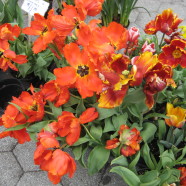
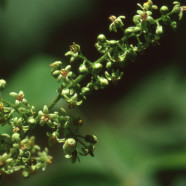

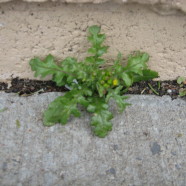
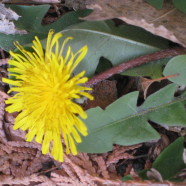
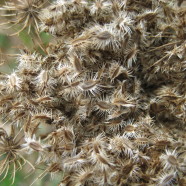




Recent Comments